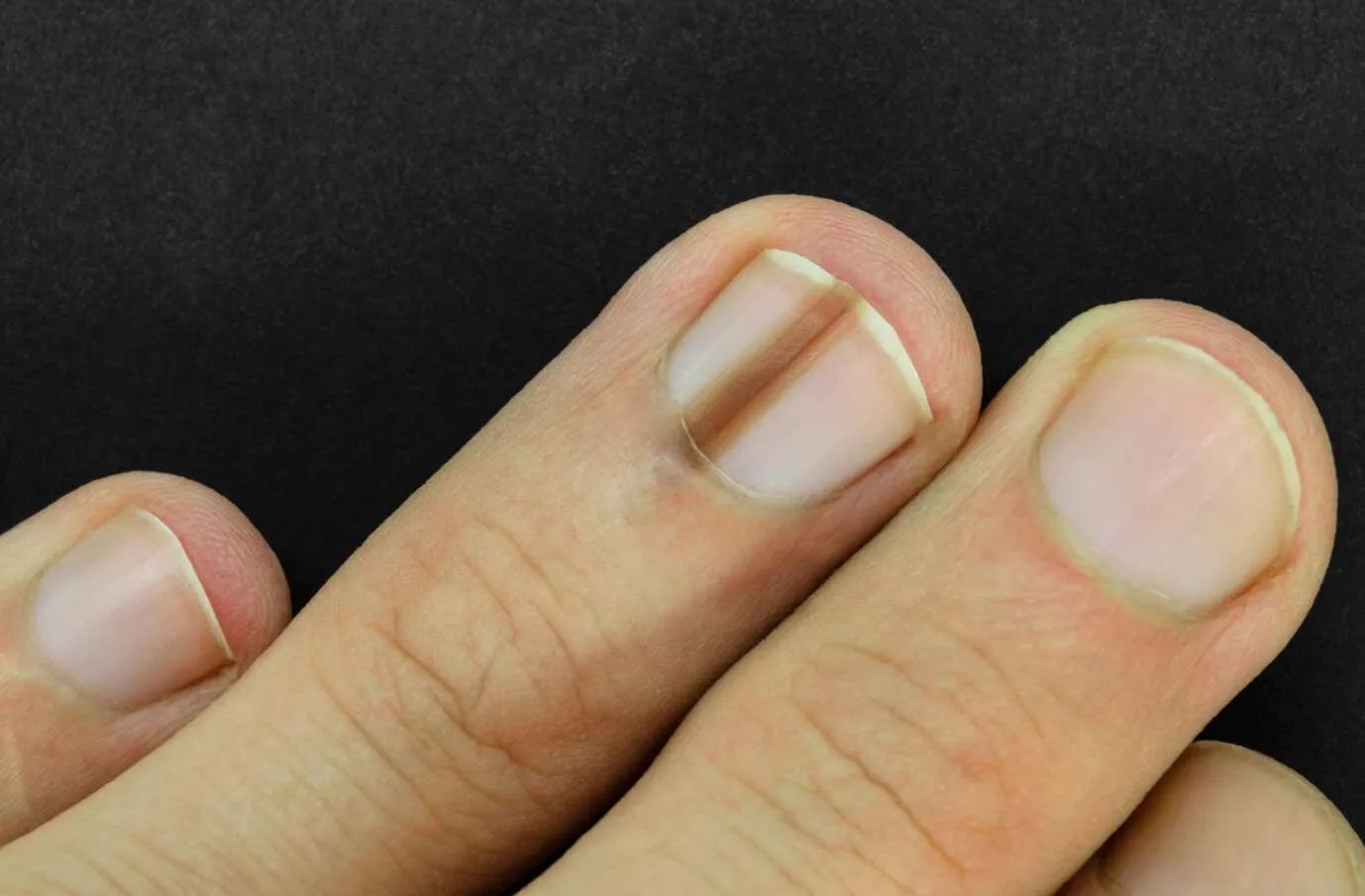What are the symptoms of a splinter hemorrhage?
Splinter hemorrhages are small, linear streaks of bleeding under the nails that resemble splinters. They are usually found on the fingernails or toenails and are typically brownish or reddish in color. Symptoms include:
- Linear Streaks: The primary symptom is the appearance of linear streaks or lines under the nails, running parallel to the nail’s growth direction.
- Discoloration: The streaks can vary in color from red to brownish-black.
- No Pain: Splinter hemorrhages are usually painless and do not cause discomfort.
Splinter hemorrhages can be a sign of various underlying conditions, such as trauma, infections, or systemic diseases. If they appear without an obvious cause or are accompanied by other symptoms, it’s important to seek medical evaluation to determine the underlying cause.
What are the causes of a splinter hemorrhage?
Splinter hemorrhages can be caused by a variety of factors, including:
- Trauma: Physical injury or repeated trauma to the nail can cause small blood vessels to rupture, resulting in splinter hemorrhages.
- Infections: Certain infections, particularly endocarditis (an infection of the heart valves), can lead to splinter hemorrhages as a result of small emboli traveling to the nails.
- Systemic Diseases: Conditions such as vasculitis (inflammation of blood vessels), systemic lupus erythematosus (SLE), and other autoimmune diseases can cause splinter hemorrhages due to abnormal blood vessel behavior.
- Blood Disorders: Disorders like thrombocytopenia (low platelet count) or other coagulation problems can lead to bleeding under the nails.
- Subacute Bacterial Endocarditis: This type of heart infection can cause splinter hemorrhages due to small emboli traveling to the nails.
- Psoriasis: Nail psoriasis can sometimes present with splinter hemorrhages as a result of underlying nail changes.
- Nutritional Deficiencies: Certain vitamin deficiencies, such as vitamin C or vitamin K deficiency, can also lead to splinter hemorrhages.
- Certain Medications: Use of certain medications, especially those affecting blood clotting, can contribute to the development of splinter hemorrhages.
If splinter hemorrhages appear without a clear cause or are associated with other symptoms, it’s important to consult a healthcare provider for further evaluation and diagnosis.
What is the treatment for a splinter hemorrhage?
Treatment for splinter hemorrhages depends on the underlying cause. Here’s a general approach to managing them:
- Address the Underlying Cause: Treating the root cause, such as an infection or a systemic disease, is crucial. For example, if an infection like endocarditis is causing the splinter hemorrhages, appropriate antibiotics or other treatments for the infection will be necessary.
- Manage Trauma: If trauma is the cause, ensuring the injury site is protected and allowing it to heal may be sufficient. Avoiding further trauma to the affected area is important.
- Correct Blood Disorders: If the splinter hemorrhages are related to blood disorders or platelet issues, treatment may involve managing the specific blood condition, such as using medications to control bleeding or adjusting existing treatments.
- Nutritional Support: For splinter hemorrhages related to nutritional deficiencies, improving the diet or taking supplements to address deficiencies in vitamins such as vitamin C or vitamin K may help.
- Medication Review: If medications are suspected to contribute to the condition, a healthcare provider may review and adjust the medication regimen accordingly.
- Medical Follow-Up: Regular follow-up with a healthcare provider is important to monitor the condition and make adjustments to the treatment plan as needed.
If the cause of the splinter hemorrhages is unclear or if they are associated with other symptoms, it’s advisable to seek medical evaluation to determine the appropriate treatment strategy.

Leave a Reply
You must be logged in to post a comment.